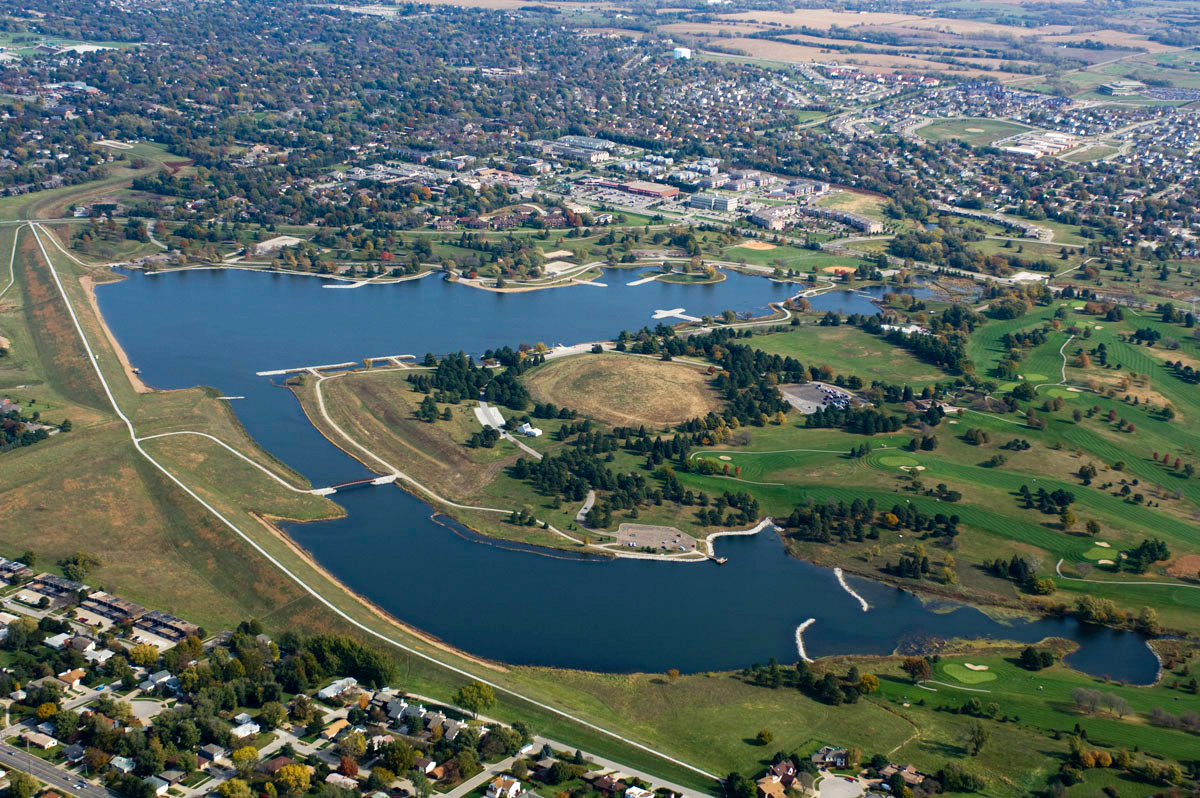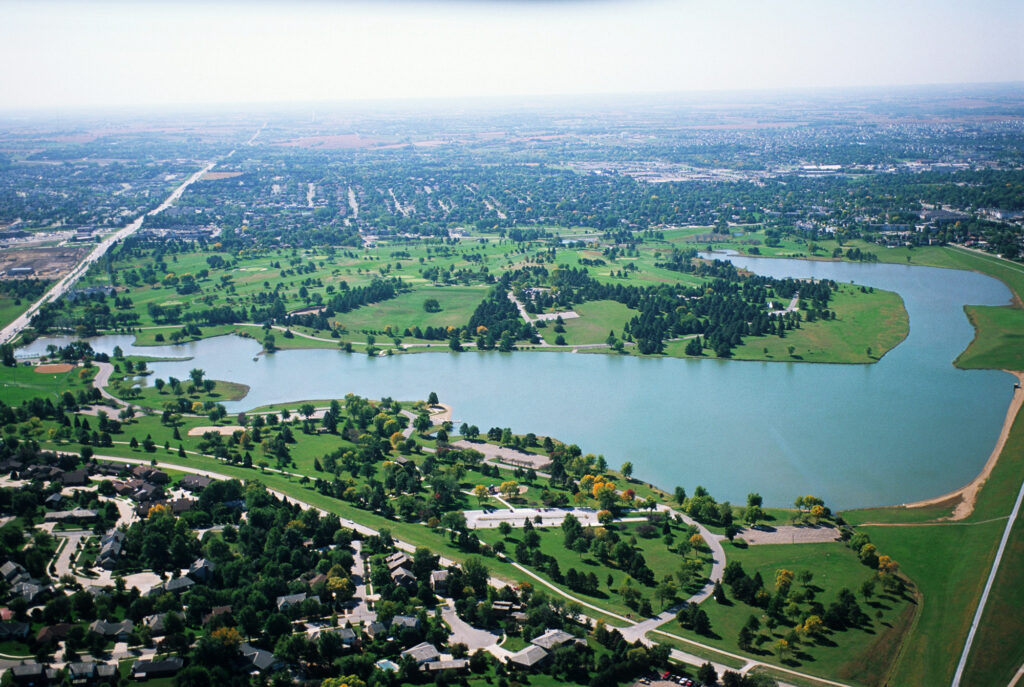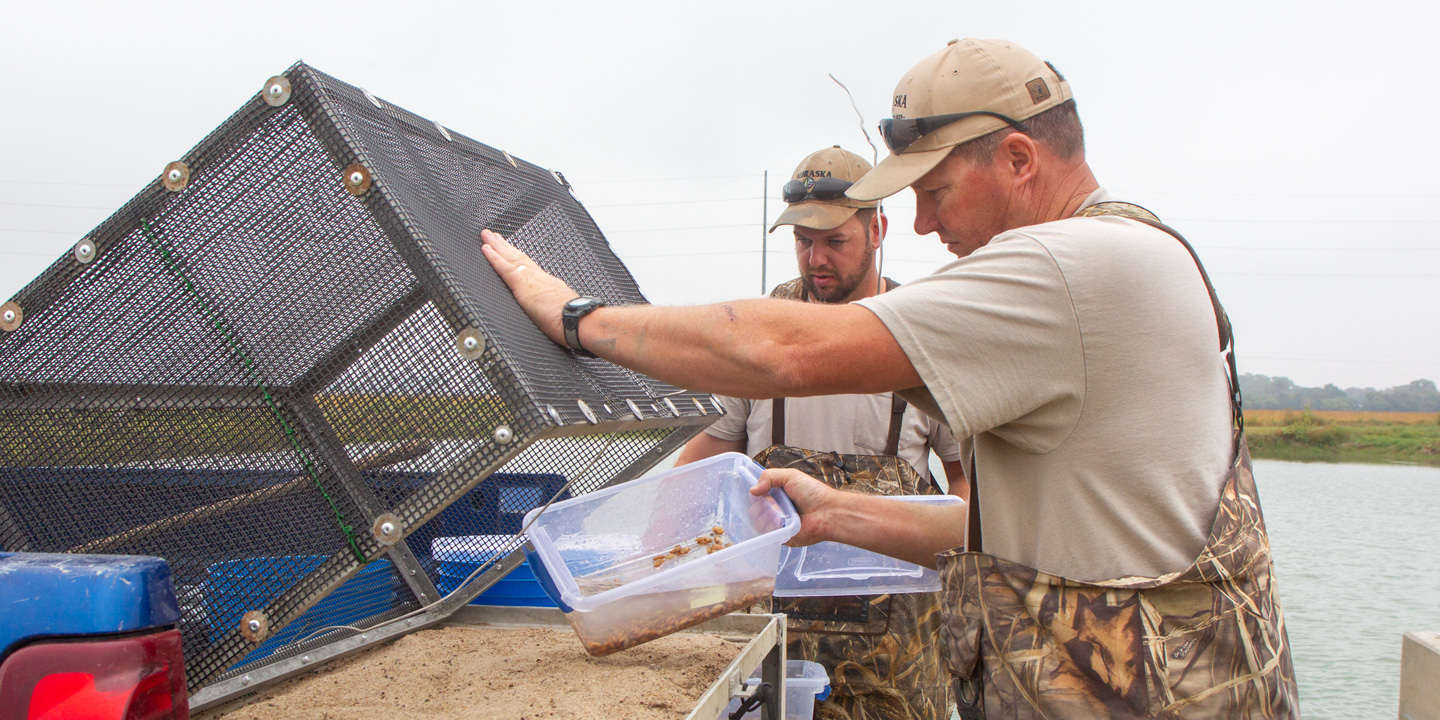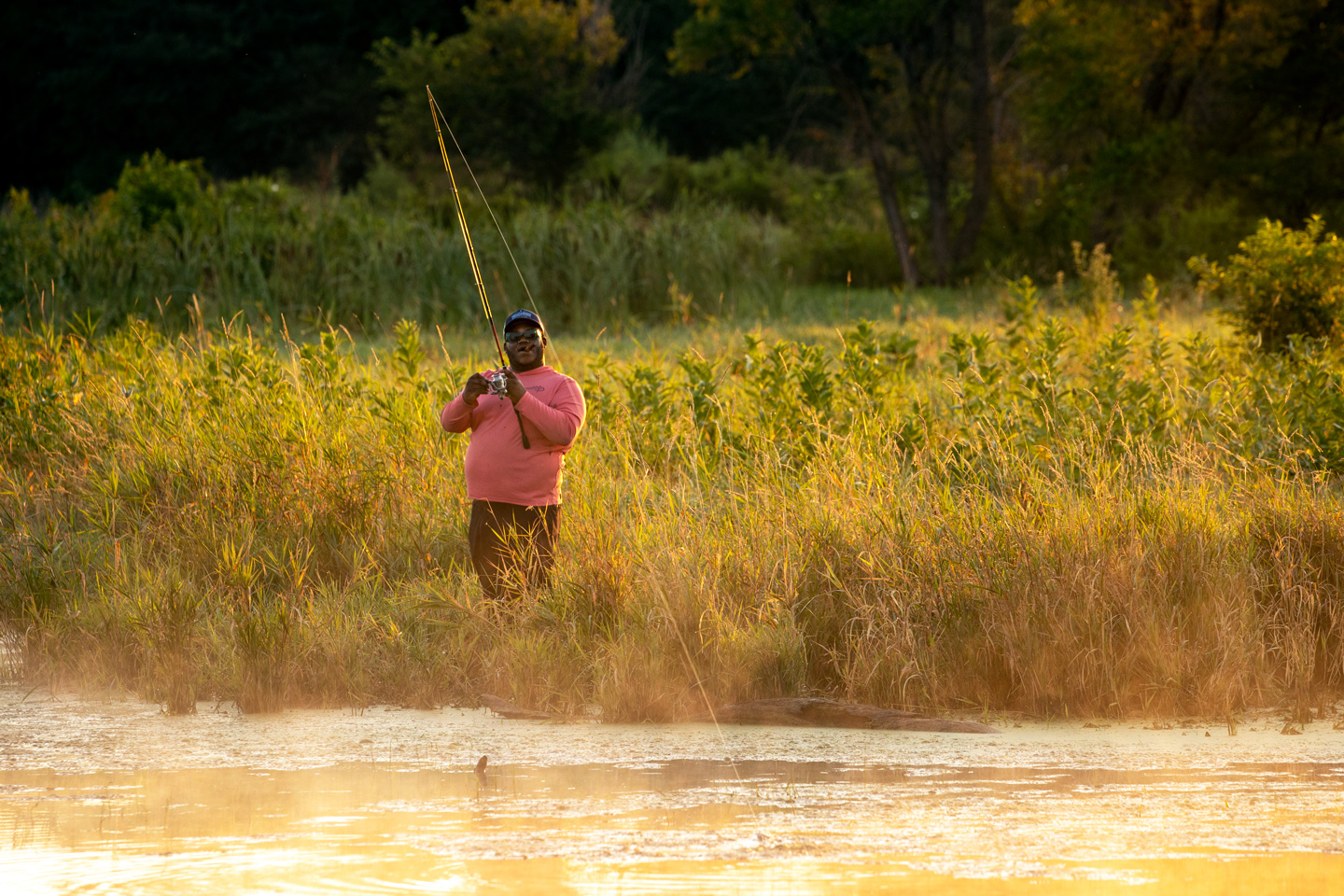Holmes Lake Aquatic Habitat Project

Why we did it
Holmes Lake, a 123-acre reservoir that is part of Holmes Park in the City of Lincoln, was the site of an Aquatic Habitat Program project in 2001. The lake, completed in 1962, had consistently suffered from high turbidity caused by clay particles suspended in the water most of the year and from the presence of common carp. It had been determined water transparency in the lake was significantly affected by suspended solids. Sedimentation and nutrient loading were the main factors contributing to the degraded condition of Holmes Lake.
Shoreline erosion was an insignificant contributor of sediment to the lake, but it did contribute to the destruction of wetland plants and fish habitat. Tens of thousands of wetland plants had been planted along shorelines to reduce erosion, but poor survival and establishment of the plants reduced its effectiveness. Low survival of those wetland plants probably was influenced by several factors, including grazing on plants by resident Canada geese, lack of protection from wind and wave erosion, and uprooting and grazing by common carp.
The fish community in Holmes Lake had contained gizzard shad, common carp and white perch, all of which are destructive to the game fish population and the aquatic environment. As part of the aquatic habitat project, the fish population in the lake was renovated.
How we did it
Work began in 2001 and included building three wetlands to reduce phosphorus loading and excavating 30% of the lake basin to a maximum depth of 14 feet. A significant challenge of this project was where to deposit this large amount of sediment. Several locations were evaluated, such as spoiling on the golf course or hauling off site. The only cost-effective location identified was on site which was layered up to 20 feet high south of the golf course.
Initially, the lake level was lowered 3.5 feet and the existing 15-inch minimum length limit for largemouth bass was removed. This allowed more opportunities for anglers to harvest fish and improve public acceptance of the project.
Riprap was installed to protect 2,000 feet of shoreline and sediment dams were built on the north and south arms of the lake. For anglers and shoreline protection, five 100-foot-long jetties and two L-shaped jetties were built.
In addition, sediment was excavated from the Antelope Commons Wetland Complex, channels were dredged to assist in drying out of lake basin, and the outlet structure was modified to allow additional draw-down capacity and water-level manipulation.
The project was completed in 2005.

An aerial photograph shows Holmes Lake Recreation Area prior to the restoration project.
Benefits from these changes
By removing sediment from the lake basin, depth and diversity were improved. With the completion of other improvements in the watershed, the recreation value of the reservoir should be extended by another 30 years. Future problems will be shifting to nutrient loading from lawn applications. With the additional wetlands designed into this project, nutrients removal should be substantial enough to ensure moderately good water clarity. This should help to preserve and protect future water quality and improve the general aesthetics of the area. The City of Lincoln made a significant contribution to the project with the addition of two bridges and connecting trails. The improvements to the fishery, angler access and trails all served to contribute to a 10-fold increase in use at the park.
The fishery, water quality and anglers obviously benefited. Carp and gizzard shad were removed through a rotenone renovation. Carp feeding habits commonly cause resuspension of sediment and particulate materials reducing light penetration and increasing internal nutrient loading. Gizzard shad prey primarily on zooplankton in open water. Since zooplankton are the primary grazers on algae, removal of gizzard shad can help restore better size structure and density of the zooplankton population, increasing their effectiveness at controlling algae. After the completion of the habitat project, the lake was stocked with largemouth bass, bluegill, walleye and channel catfish.
Project partners
- City of Lincoln, funding partner
- Nebraska Department of Environmental Quality, funding partner
- Lower Platte South Natural Resources District
- Sport Fish Restoration, funding partner
- Nebraska Environmental Trust, funding partner
- Private donations
The Aquatic Habitat Program
The Aquatic Habitat Program was created in 1997 and was the first program of its kind in the nation. Since then hundreds of waterbodies across the state — everything from lakes to streams to rivers to ponds — have been renovated, improving aquatic life and water quality for Nebraskans.



